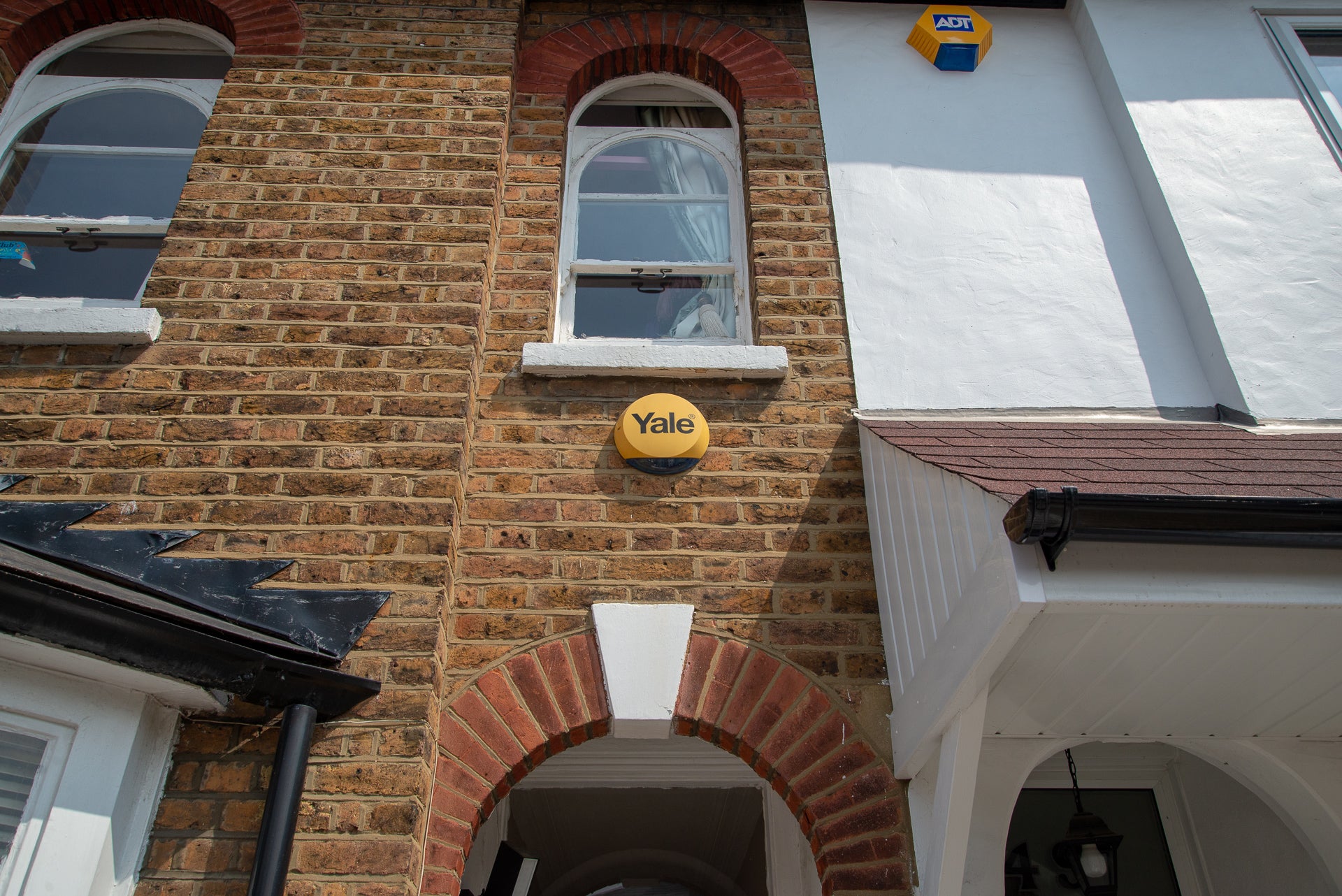Ring Alarm Review
Ring Alarm Review
Gets all of the basics right
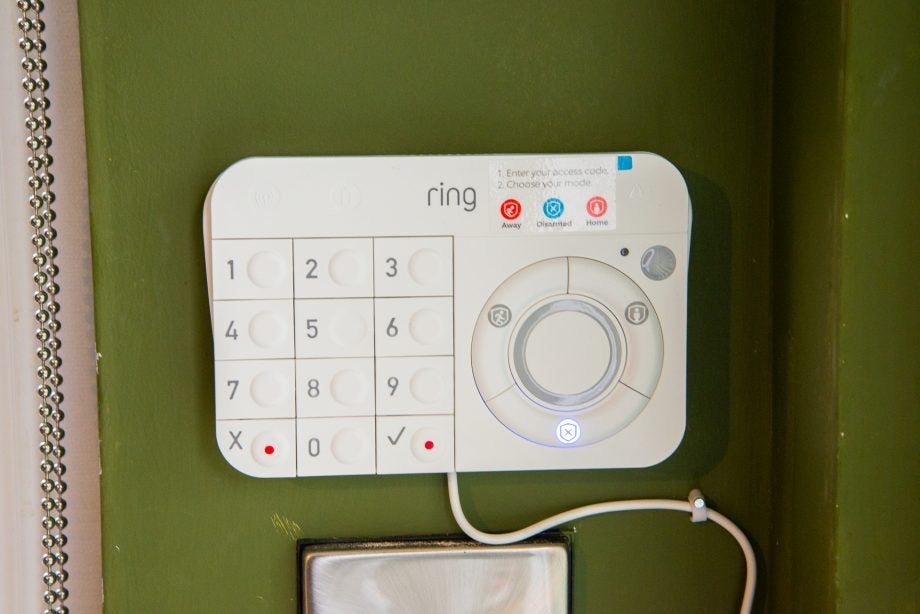
Verdict
Simple to install and simple to control, the Ring Alarm gets all of the basics right to deliver what you need from a smart DIY alarm system. With the optional assisted monitoring you get close to a professionally monitored system, making sure that you or one of your contacts responds to an alarm being set off. Key-fob control and better smart home integration would be nice, but even without those the Ring Alarm is currently the best smart alarm system that we've reviewed.
Pros
- Well priced
- Easy to install
- Option Assisted monitoring
Cons
- No key fobs
- No smart home integration
Key Specifications
- Review Price: £249
- Ethernet, Wi-Fi and optional cellular internet connection
- Contact sensors and pet-safe Motion Sensors
- Keypad, app and Alexa for arming/disarming
- Battery backup
UPDATE: the Ring Alarm has now been replaced with the Ring Alarm (2nd Generation). This new alarm system has new sensors and a new Keypad, but the same base station, so you can upgrade your existing alarm with the new devices. There are some new features, which have also been rolled out to the original alarm, so check out the newer review for the most recent information.
The UK has been rather lacking in smart security systems, with older products not getting any updates and new products failing to materialise. That changes now with the launch of the Ring Alarm.
From the same people that brought you the Ring Video Doorbell Pro, the alarm system shows the company’s continued ambition to protect all aspects of your home. Impressively, the Ring Alarm is one of the cheapest DIY security systems, and you can add assisted monitoring on top for just £8 a month.
There’s not quite the full flexibility we would want on offer and some minor tweaks would make it perfect, but as it stands, the Ring Alarm is the best smart security system that you can buy in the UK.
Design and features
The Ring Alarm is incredibly easy to install. There are different packages available with different sensors, but I started with the Ring Alarm Security Kit (£249), which has the base station that connects to your router and doubles as a siren; a keypad for arming and disarming; a contact sensor (for windows and doors); a motion detector (pet safe); and a range extender. The latter boosts the range of the Z-Wave sensors to give you more range. You probably won’t need it if you stick to the kit, but those with larger houses will want to install it as they can add additional contact sensors and motion detectors. Neatly, all kit in the box comes pre-paired to the base station, so they’re ready to go as soon as you pull out the battery tab.
I recommend placing motion detectors in hallways and to cover large rooms, and contact sensors on all external doors and windows that can be easily reached.
In the US Ring also sells a flood and freeze sensor to tell you if there’s a leak and warn you if your pipes are in danger of freezing; a smoke and carbon monoxide listener, which will alert you if your existing sensors go off; a panic button to trigger the alarm; and a third-party dome siren to make your alarm easier to hear throughout your home. I’ve been told that accessories will come to the UK at a later date.
Installation is easy following the instruction booklet. You first need to find somewhere to mount the base station, which can be screwed to the wall out of the way, or it can sit flat on a desk. The former seems neater to me, keeping it out of the way. Given that this is the main alarm, you should have it somewhere that it can be heard easily. It must be connected to power and can hook up to your home internet connection using Ethernet or Wi-Fi. It has a battery inside that will give you 24-hours of runtime in the event of a power failure.
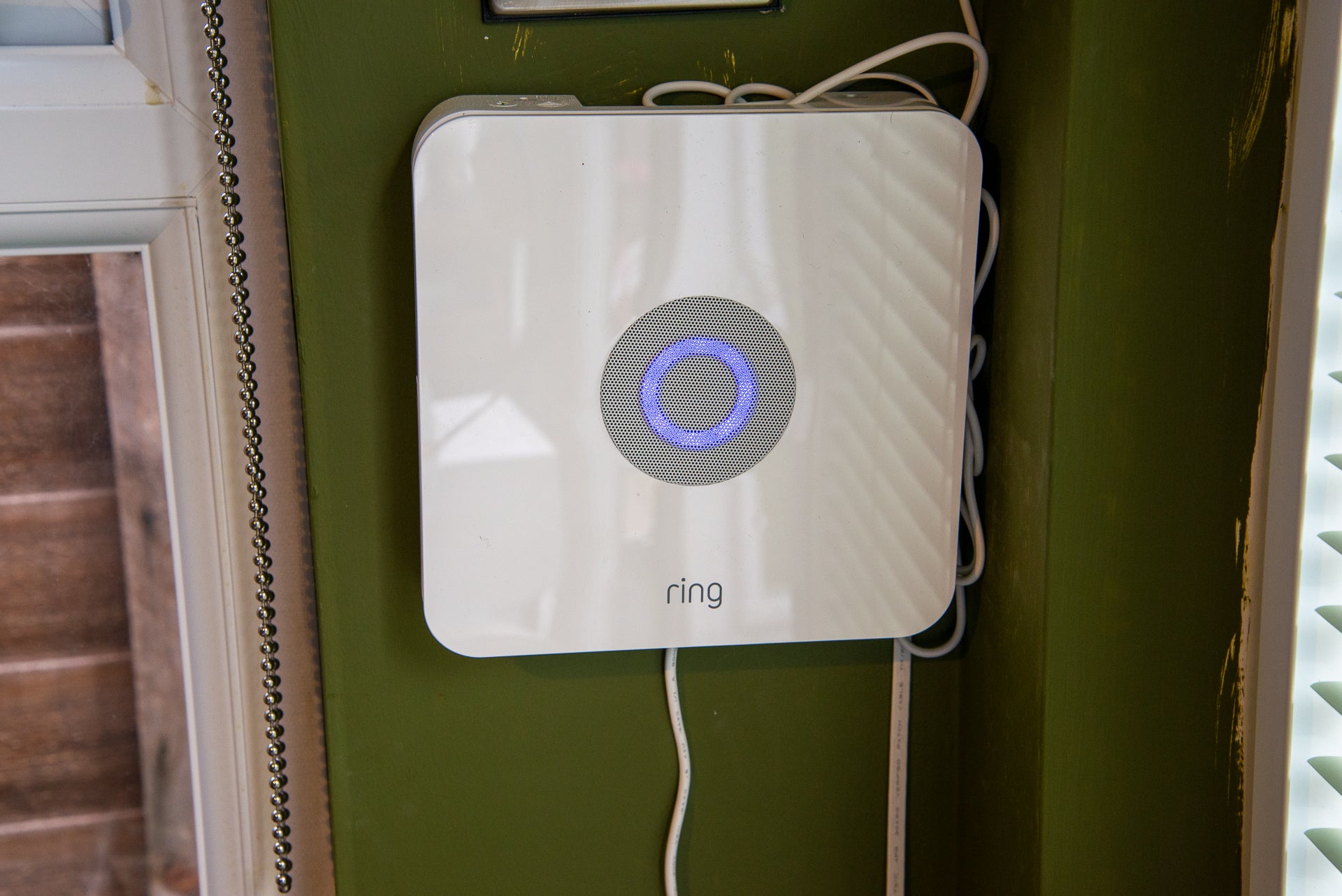
The base station doubles as an internal siren
Next, you need to connect the keypad. You can either plug it in via USB (there’s an adaptor in the box, but I used the USB port on the base station) or charge its internal battery and use it wirelessly. A single charge should last six to nine months depending on how often you use it. You can have multiple keypads per house if you want to manage your alarm from different places.
Keypads can be screwed to the wall using the provided mount, or you can turn the mount around if you want to place the pad on a desk. The app then prompts you to enter a four-digit PIN that will control your alarm.
After this, you need to get your sensors installed. These can be screwed in place, although the tough double-sided sticky pads work well. The contact sensor can be attached any way around, and you can put the sensor or magnet on the door or window frame.
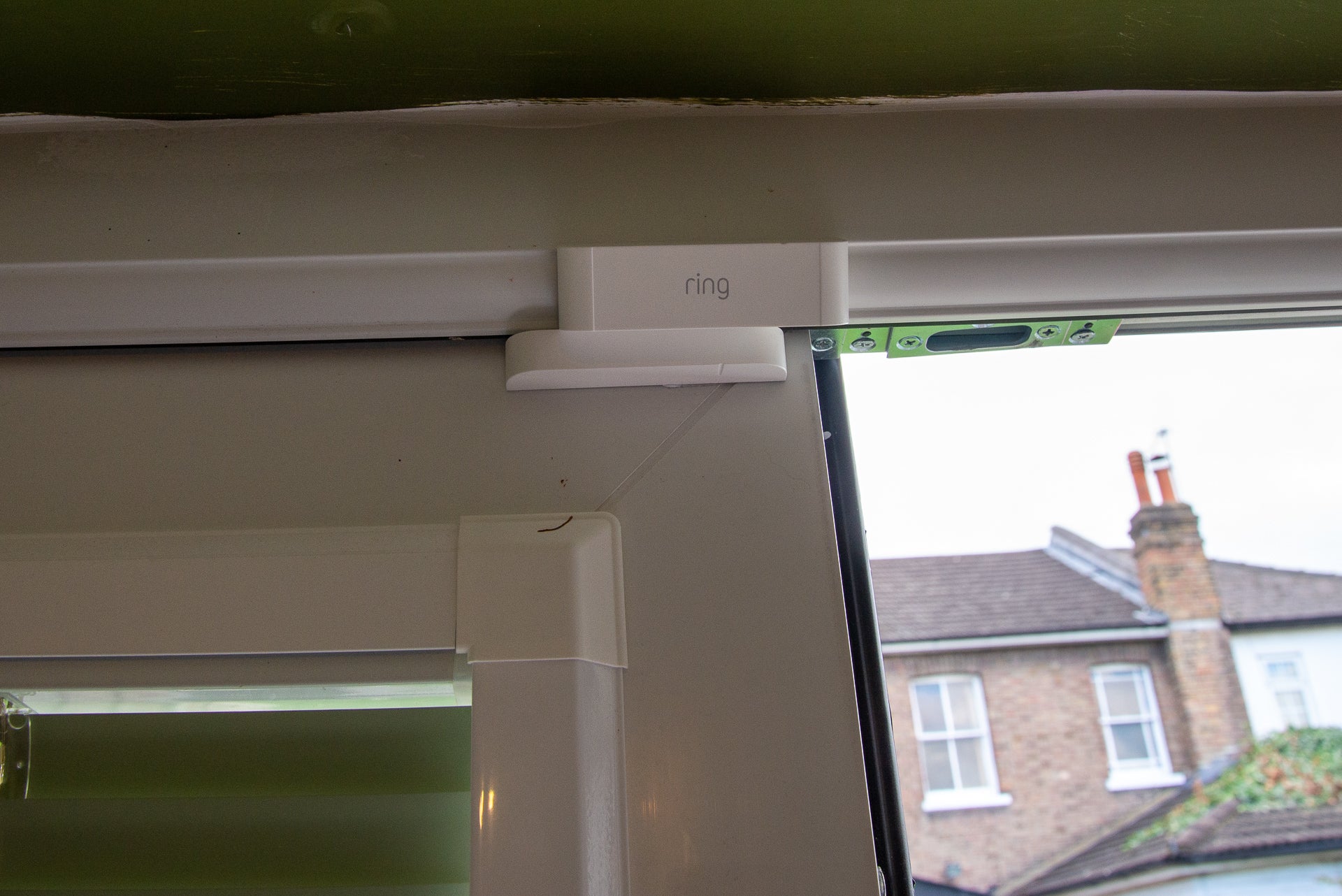
You can attach the contact sensor in a few seconds
With the motion sensor, you need to make sure that you have adequate coverage. There’s a test mode that you can use, and you might want to Blu-Tac the sensor in place while you test its area of coverage before securing it into place.
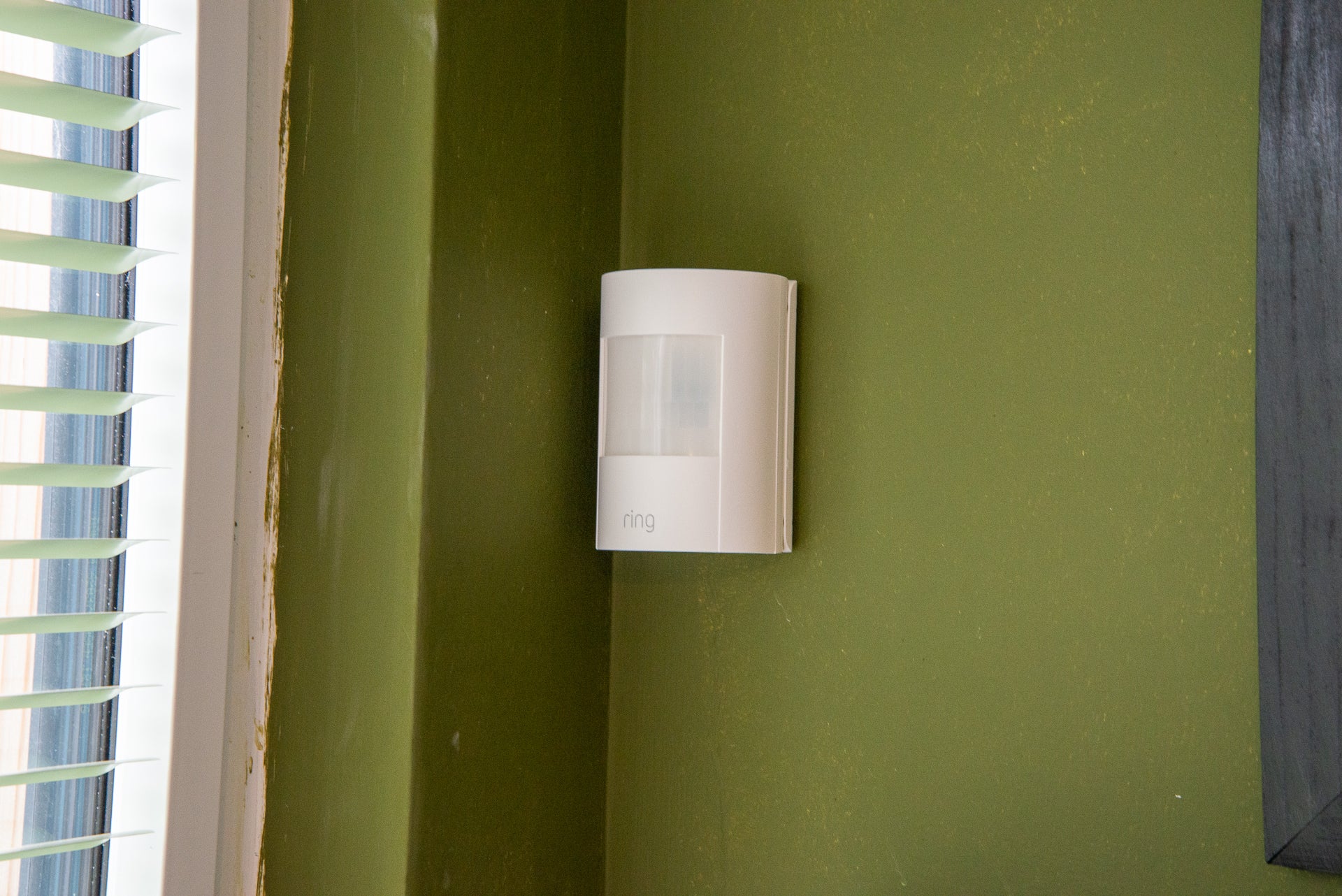
Test the Motion Sensor before you finish placing it
Arming and disarming
The Ring Alarm has three modes: Disarmed, Away and Home. For Away and Home modes, you can choose which sensors you want to monitor and which you want to ignore. It makes sense to have Away monitor everything, but to have Home use a subset of sensors. For example, for Home mode, you may want to turn on all sensors downstairs, but leave the upstairs ones off, for added security when you go to sleep. You can control which modes each sensor uses from its settings page, but it’s easier to manage everything from the main Settings, Modes page in the app.
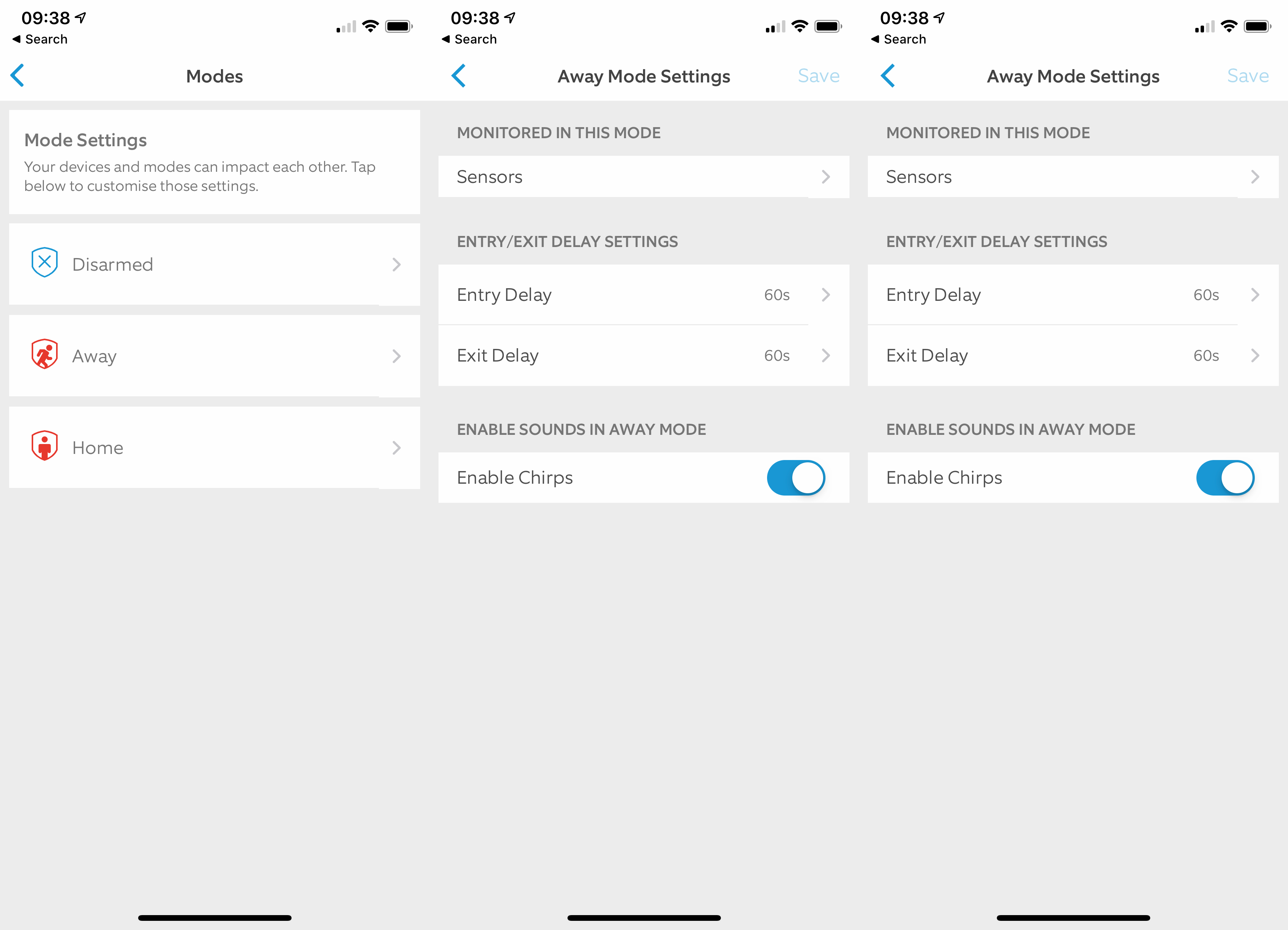
You can choose which sensors work in which modes
Modes will also apply to security cameras soon, so having your alarm set to Home will turn off internal cameras but leave external ones turned on, Disarmed turns off everything, and Away will turn on all cameras. This will let you operate your cameras automatically based on the state of your alarm; Ring users without an alarm will be able to set modes manually.
When setting modes it’s important that you followed the installation instructions to choose if a sensor is an Entryway or Room sensor. Entryway sensors add a delay to the alarm sounding to give you time to turn the system off, whereas Room sensors sound the alarm immediately. You can change how a sensor acts in its Settings page.
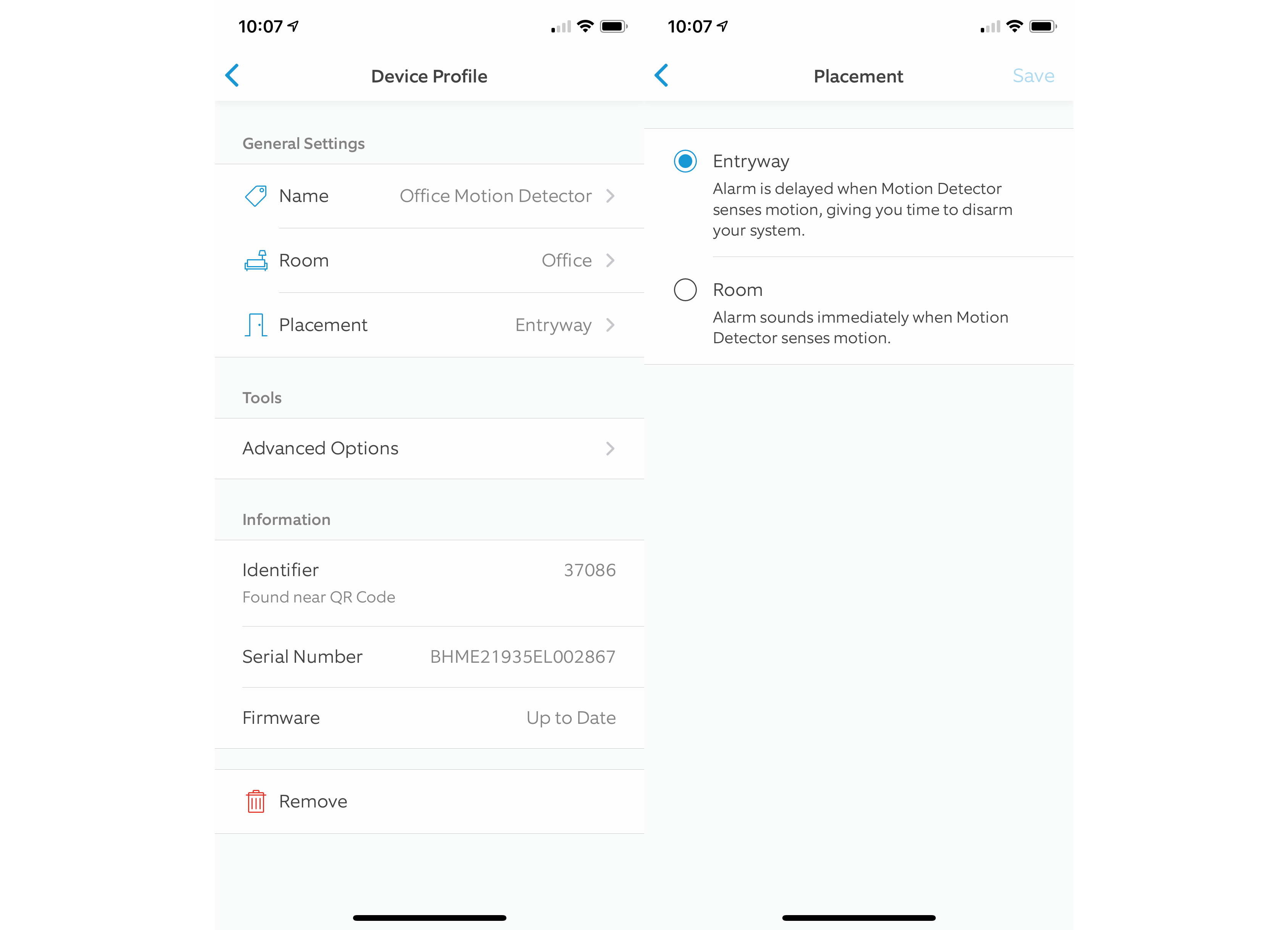
Make sure you have your sensors in the correct operating modes
By default, contact sensors make the base station and keypad chirp when triggered, so you can use them as a general alert to know when somebody has opened a door or window. These sounds can be turned off per device. Motion sensors don’t chirp by default as this would most likely get annoying quickly, but you can turn on the option if you prefer.
Setting the alarm is easy with the keypad: just type in your PIN and select the mode that you want. You get a warning if a contact sensor is open, and open sensors are added to the bypass list, where they will not set the alarm off. It’s a useful system for being able to leave a door or window open and still have the rest of the house alarmed.
The only issue is if you, say, try and alarm your system with the front door open. If you do this, the system warns you that the sensor has to be bypassed: if you bypass it, then it’s not active; if you ignore the prompt, the system doesn’t arm. The workaround is to use the app after you leave the house, or to have the door shut before you set the alarm, then you can open and close the door during the exit delay. It would be better if Ring just warned you about sensors being open, and then only bypassed those that were open at the end of the exit delay. Disarming is a case of entering your PIN and selecting the mode you want (Disarm or Home).
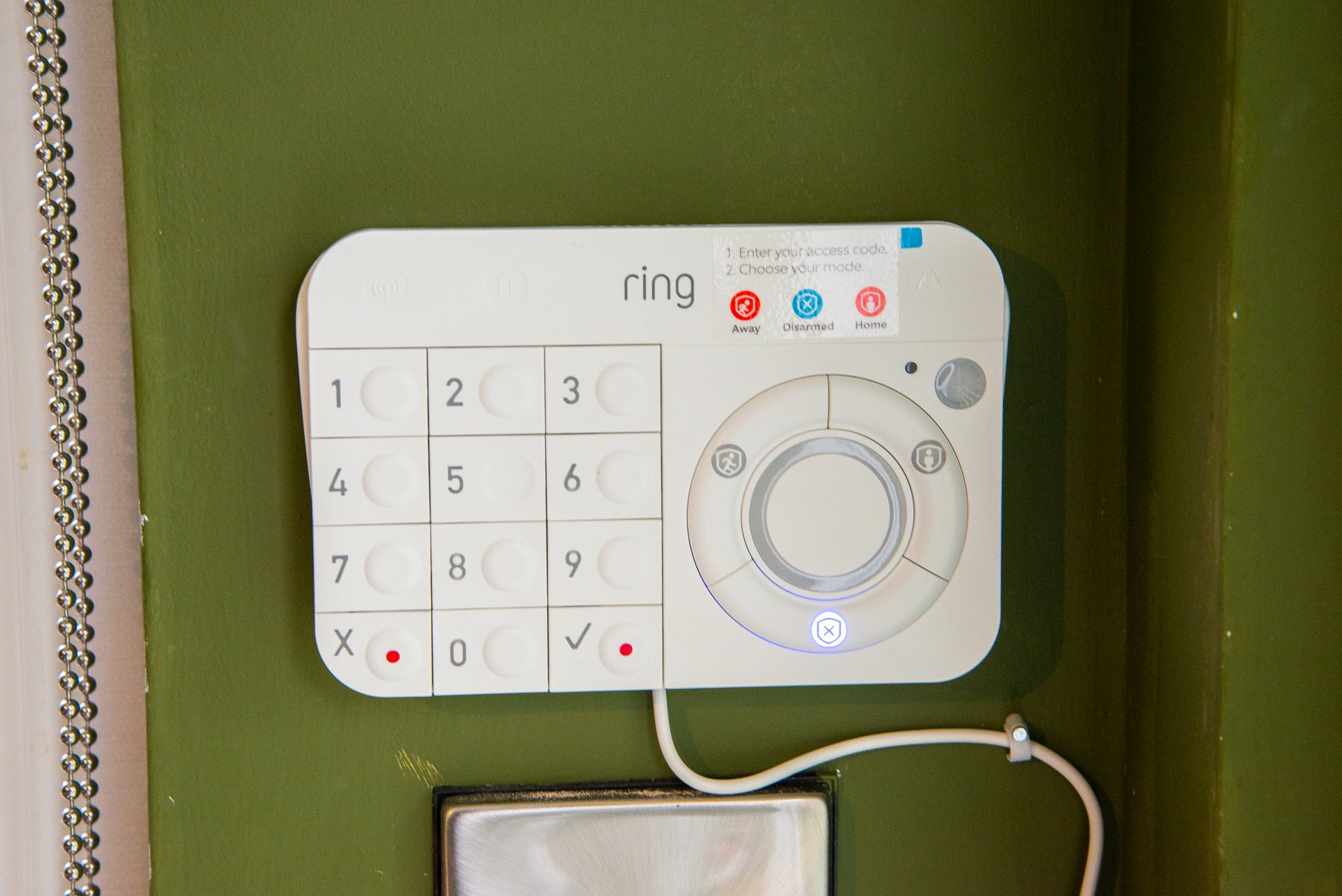
The keypad is easy to use but a key fob would be a nice option
Having a Keypad is handy to give multiple people access to your home, and you can add Shared users that can have access via the app and their own PIN, and Guest users that just get their own PIN. That’s a neat way of doing it, as you can remove someone from your system without having to change your PIN.
The alarm can also be controlled using the simple controls that sit at the top of the app. It’s a quick way to manage the alarm when you’re away from home, but is less convenient if you’re returning home and have to pull out your phone. Ideally, Ring would sell key fobs to make the job easier for the main people that live at home.
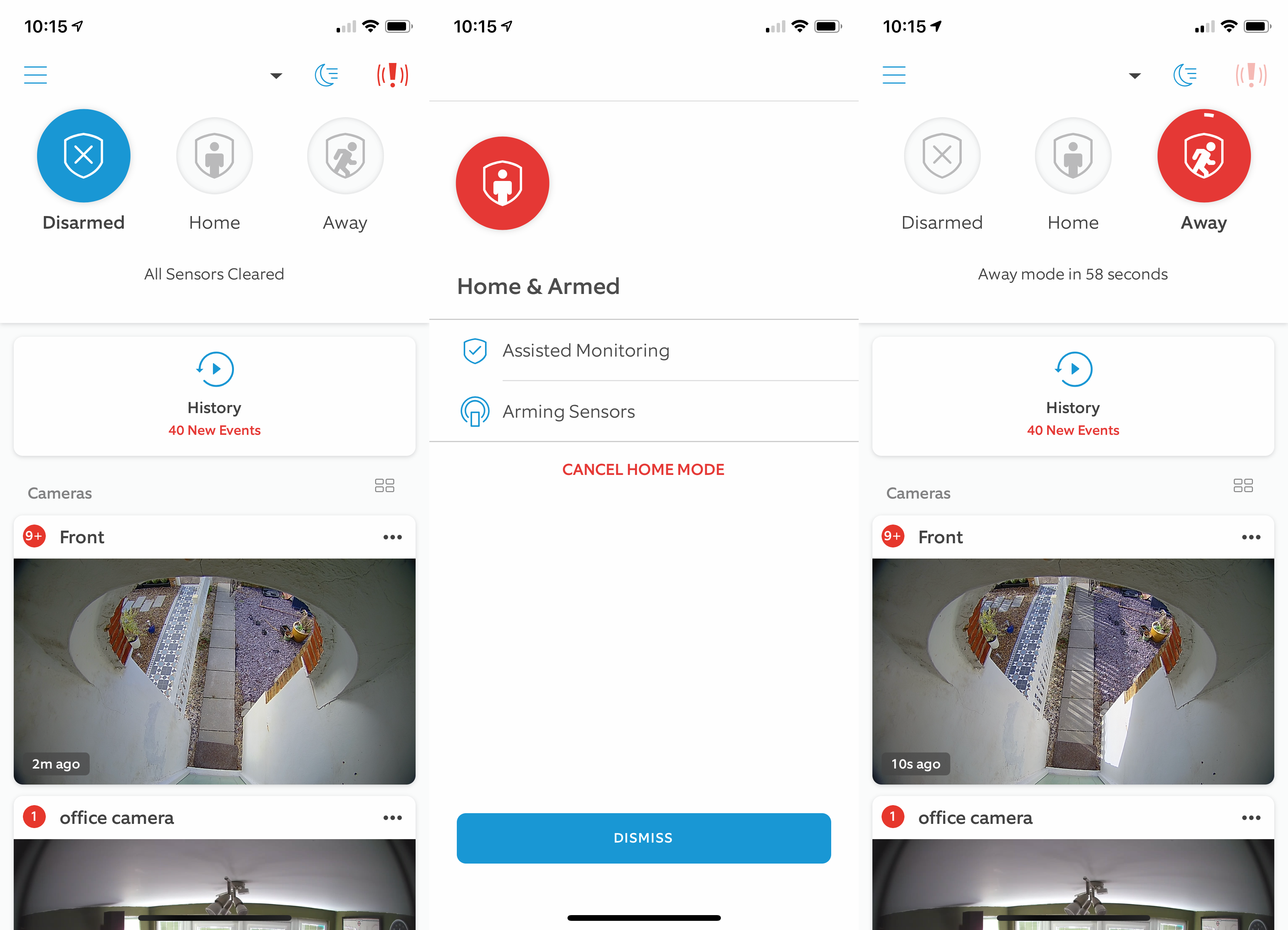
You can control the alarm from the app
Alexa integration is available. By default, you can set the alarm using your voice. If you want to disarm the system, you have to turn on the option in the Alexa app. This requires you to say your voice code to disarm the alarm, which means that anybody that overhears you saying your code can disarm your system.
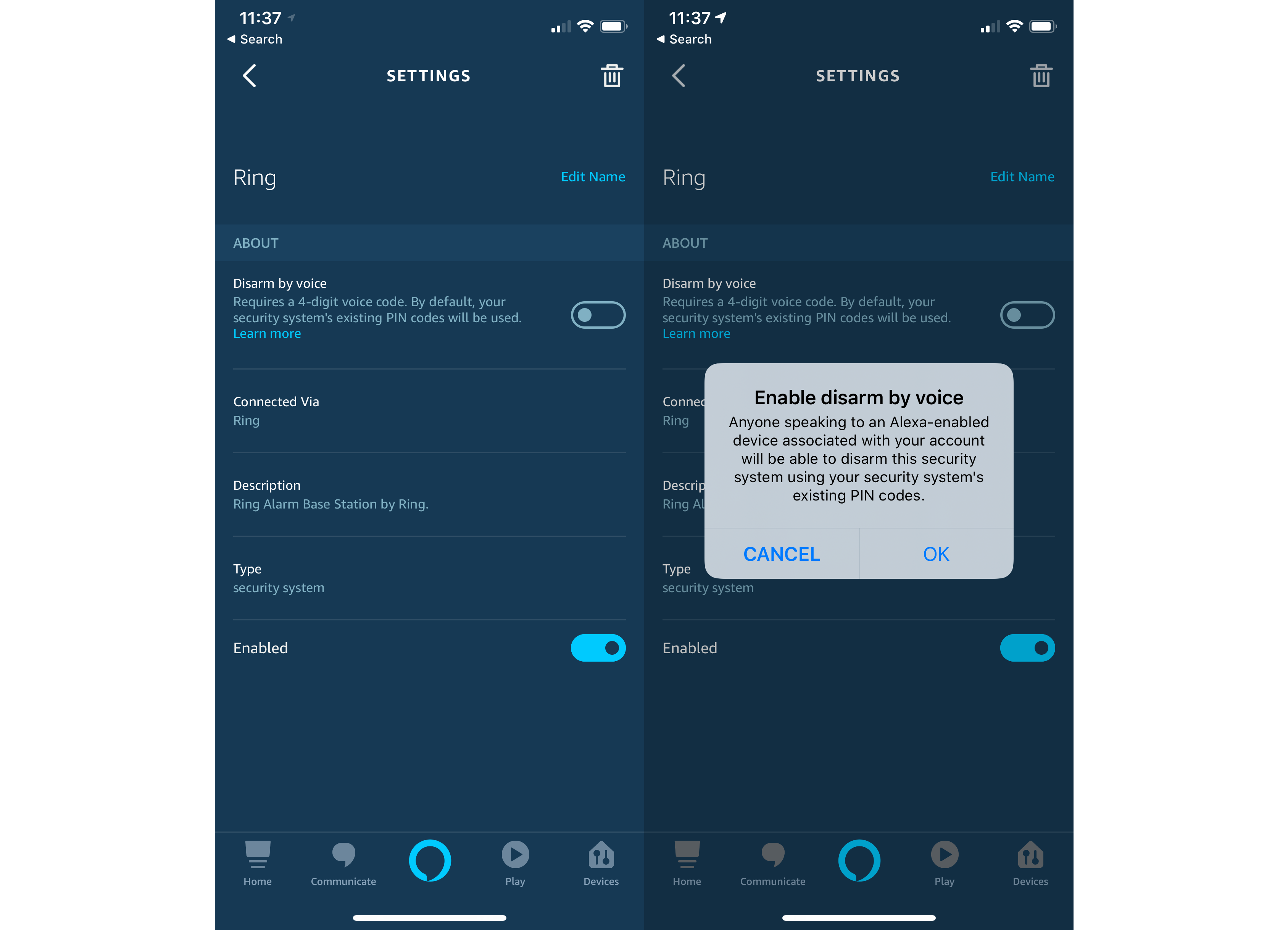
You have to enable disarming in the Alexa app
Whether you use Alexa to its full potential depends on what you want to do. I have the Ring Alarm in an external office, isolated from the house, so Alexa is useful. It’s also useful for people that want to turn on and off the Home modes, but I didn’t find it so useful for disarming the system from Away mode.
There are no other smart integrations available through the Ring app; however, all of the sensors are available to be used in Amazon Alexa routines, say turning on a light when a door opens or saving energy by turning lights off when no motion has been detected. It would be nice if the mode was exposed in a similar way, say turning off everything in your home when the alarm was set to Away mode.
Protect Plus
With the standard installation, the Ring Alarm sounds the internal siren if the system is not disarmed in time. This also triggers a push notification to your phone. Neatly, with ‘Linked Devices’ option you can also trigger any of your Ring cameras to record, so you can capture evidence of what’s happened.
Provided that you spot the notification, you can then check your cameras (if you have any) to find out what caused the alarm and take appropriate action, such as disarming the system or calling the police.
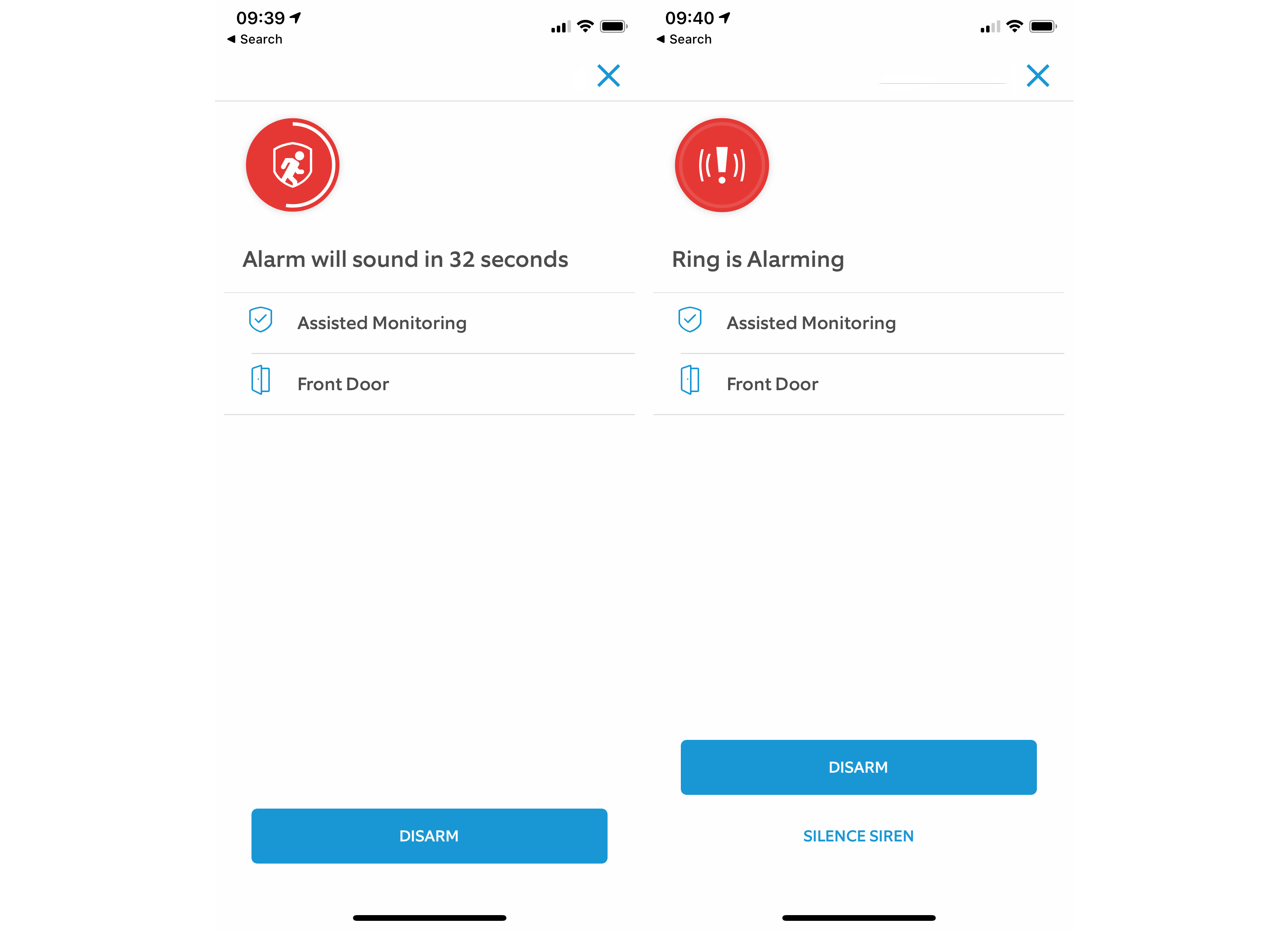
The app lets you know if the alarm is triggered
If you pay for a Ring Protect Plus account (£8 per month or £80 per year), you get assisted monitoring. If an alarm notification isn’t dealt with, you get a phone call to warn you what’s going on. Not answering the call results in a voicemail, then your second contact is called, and then the third contact. This process repeats until a call is answered.
Calls are automated, using a robotic voice to tell you that your alarm has gone off, and require you to acknowledge receipt of the call. It’s a useful addition to the alarm and makes it harder to miss what’s going on.
It’s not quite professional monitoring as you get in the US, where Ring can call the police for you. In the UK, regulations are different and only professionally-installed and serviced systems can contact emergency services.
Still, Ring’s option is a decent half-way house and buying Ring Protect Plus also gives you 30-days of video monitoring history for any number of cameras, turns on cellular backup for the base station, you get extended warranties for your Ring devices and 10% off any products bought at Ring.com.
You should buy it if….
- You want a simple DIY alarm
This alarm system is really easy to install and quick to configure.
- You have Ring Cameras
If you have Ring Cameras, they can be configured to arm and disarm in sync with your alarm system.
- You want basic monitoring
If you pay for the max subscription you’ll get an automated phone call if your alarm triggers, which is better than a simple smartphone alert.
You should not buy it if…
- You want flexible control options
You can configure the alarm using your phone or the keypad but there’s no alarm fob.
- You want proper monitoring
If you want a system where the police can be dispatched automatically, this isn’t the alarm for you.
FAQs
Yes, but only if you pay for the top-level of Ring Protect.
It can connect via Ethernet and, once set up, will work even if your internet connection goes down.
Yes you can, although you lose out on a few features.
No, it works with Amazon Alexa only.
Specs
Trusted Score
Jargon buster
Alexa
Amazon’s smart voice assistant


